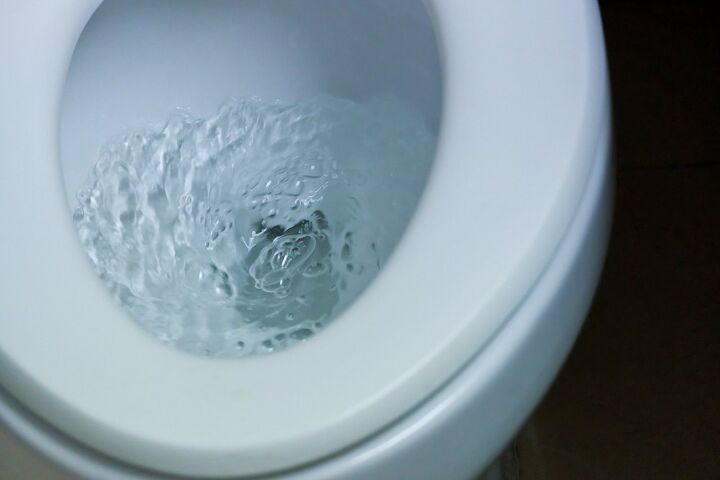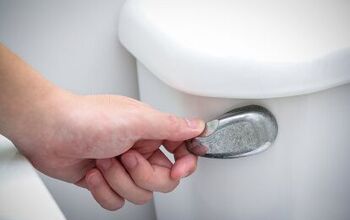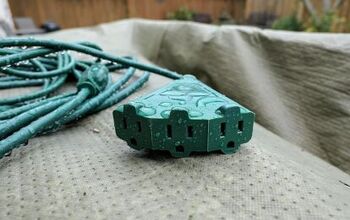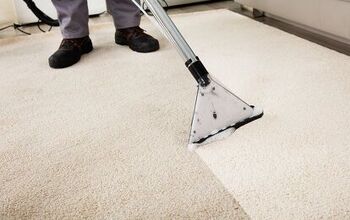Can You Flush Tissues? (Find Out Now!)

Facial tissues like Kleenex and similar products can be found in most households in at least some capacity. This can be especially true when cold and flu season rolls around. These products look and feel a lot like toilet paper, so it would make sense that they are flushable, too. However, this is simply not true.
You should never flush tissues down the toilet because they are not designed to break down in water. This means they will clog your pipes, cause leaks and overflows, or sit in the sewer system for years if they make it through your home’s draining system.
Since facial tissues are a common household item, it’s important for people to know what they should and should not do when it comes to disposing of them. And that’s why we’re here! Take a closer look for yourself.
Facial Tissues vs. Toilet Paper
Facial tissues may look like toilet paper, but they are very different in composition. What is true is they are both made from paper pulp and are meant for single use only.
Facial tissues feature a smoother surface than toilet paper and are made to absorb moisture, which means they won’t break down the same way toilet paper does. Furthermore, they are usually infused with lotions to make them feel softer. When fully submerged, facial tissues can take over six weeks to dissolve thanks to a chemical binder that keeps them together. Even once they begin to dissolve, they won’t break down into as small of pieces as toilet paper will.
Toilet paper, on the other hand, is engineered specifically to dissolve in water in one to four minutes on average. In fact, any brand of toilet paper you see in the grocery store has undergone testing to ensure it dissolves in a timely manner to be able to pass through your plumbing system without causing any issues.
What Can Happen When You Flush Facial Tissues
Since facial tissues are designed to hold strong once introduced to moisture, they are not going to immediately dissolve even once fully submerged. That means it has nowhere else to go but to stick inside the toilet trap or further down in the pipes, which will cause your toilet to flush slowly and eventually not work at all.
You may have already accidentally flushed facial tissues down the toilet in the past and haven’t had anything bad happen. Don’t take this as a good sign though. Your toilet may be clogging up slowly without you even knowing. Each flush will bring you closer and closer to a problem. Here’s what can happen.
Toilet and Pipe Clogs
Once facial tissues are lodged in your drain system, they can get caught in many different spots. This includes the toilet trap and further down in the pipes, too. Tissues can easily catch on screws and juts in the pipes where they can collect any debris in the future. Over time, this can form huge clogs in your pipes and cause bigger issues down the road.
Backups and Overflows
Facial tissues collecting in your pipes can lead to the water overflowing as you continue trying to flush around the clog. If you don’t close off the water supply, your toilet bowl can begin to leak. Not only will this leave your bathroom smelling terrible, but the backed up water can also ruin your floor. It can also cause water damage throughout the rest of your home if water seeps through any vents.
Littering the Sewer System
If your discarded tissues happen to make it through the pipes, they will pile up in the sewer system. Once there, they may not fully break down for years. This pollution is terrible for the environment and the sewer system itself.
Proper Disposal of Tissues
Getting rid of facial tissues is pretty straight forward. In fact, there’s only really two things you can do: throw them away or compost them. Composting is the most environmentally friendly way to dispose of them, but you will have to make sure they can go in the compost where you live.
If you can’t compost them, simply throw them away. It’s true that this isn’t exactly healthy for the planet, but it’s not terrible either. Once in a landfill, facial tissues can take anywhere from weeks to months to decompose. The good news is they won’t be clogging any pipes or polluting sewerage.
How to Fix a Clog Caused by Tissues
While toilet clogs can be a pain, there are a few easy fixes you can try without having any in-depth knowledge on how your toilet and drain system works. You should be able to deal with most minor clogs on your own. That said, the really bad ones mat require a professional hand on your side. Try these things in this order to unclog tissues from the drain:
1. Plunge the Toilet
The best tool you can have in your bathroom is a toilet plunger. For most minor clogs, it should be all you need! Specifically, you should get a toilet plunger with an extension flange to better fit the toilet. To start, push down slowly to avoid splashing water all over the place.
Push down and release multiple times to try and dislodge the clog. Throughout the process, make sure there’s enough water in the bowl to fully cover the plunger head.
2. Snake the Drain
An auger, or plumbing snake, can break up clogs or allow you to completely remove it. Drain snakes are long, flexible wires that have sharp barbs. These barbs can be useful for catching clogs in the drain, so you can pull them back up through the toilet bowl. However, they can also break clogs up inside the drain, so they can make it all the way through the system.
3. Use Drain Cleaner
If you’re planning to use a drain cleaner, you can either choose a brand name or create your own mixture at home. Should you go with the former, the best product to use is Drano® Max Build-Up Remover. Be sure to follow the instructions verbatim and wear protective gear to keep yourself safe from any splash back when pouring the solution down the drain.
If you don’t feel like making a trip to the store, you may be able to whip up your own drain cleaner with supplies around the house. The most popular mixture is baking soda, vinegar, and hot water. You should use approximately a half cup of vinegar and baking soda for every gallon of water.
Also be careful not to pour boiling water directly into the bowl or you risk melting the pipes or even cracking the bowl. Wait for the water to cool slightly, so it’s still warm. You can also use the same amount of water and Dawn dish soap to potentially clear a clogged drain.
4. Call in the Professionals
If trying to unclog the drain by yourself fails, get in touch with a local plumbing company right away. They’ll have the right equipment and resources to fix the issue the right way without ruining your plumbing system. Call a few places and get some quotes, so you can get the best service to deal with your clog.
Related Questions
Are facial tissues recyclable?
No, you cannot recycle facial tissues as the short fibers can’t make new paper products. Most recycling programs will not accept them, so you are better off throwing them in the trash or composting them.
Can you use facial tissues in place of toilet paper?
Yes, tissues will still be effective in cleaning your body after going to the bathroom. However, as we’ve been saying this whole time, you should not flush it after using them. Be sure to throw any used tissues in the trash can.
What is a fatberg?
A fatberg is a mass of solid waste that forms in sewage systems over time. It is usually made from congealed fat mixed with personal hygiene products like tissues, feminine products, Q-tips, and more. Other materials that can mix in to form fatbergs include spoiled milk, chewing gum, and food.
Conclusion
When it comes down to it, tissues are just one of the many things that should not go down your toilet drain. Much like paper towels, wipes, used condoms, clumps of hair, and other foreign objects, they are bound to cause clogs and more extensive plumbing issues down the road. The best thing you can do with your used tissues is to either compost them or throw them in the trash.

I am a copywriter and editor based in the Las Vegas area with nearly a decade of experience under my belt writing landing pages, cost guides, blog posts, newsletters, case studies, and social media content. I have a degree in Strategic Communication and experience working in both the account and creative spheres. My goal is to always be discovering new interests and bettering myself as a writer and editor along the way.
More by Kerry Souder



























